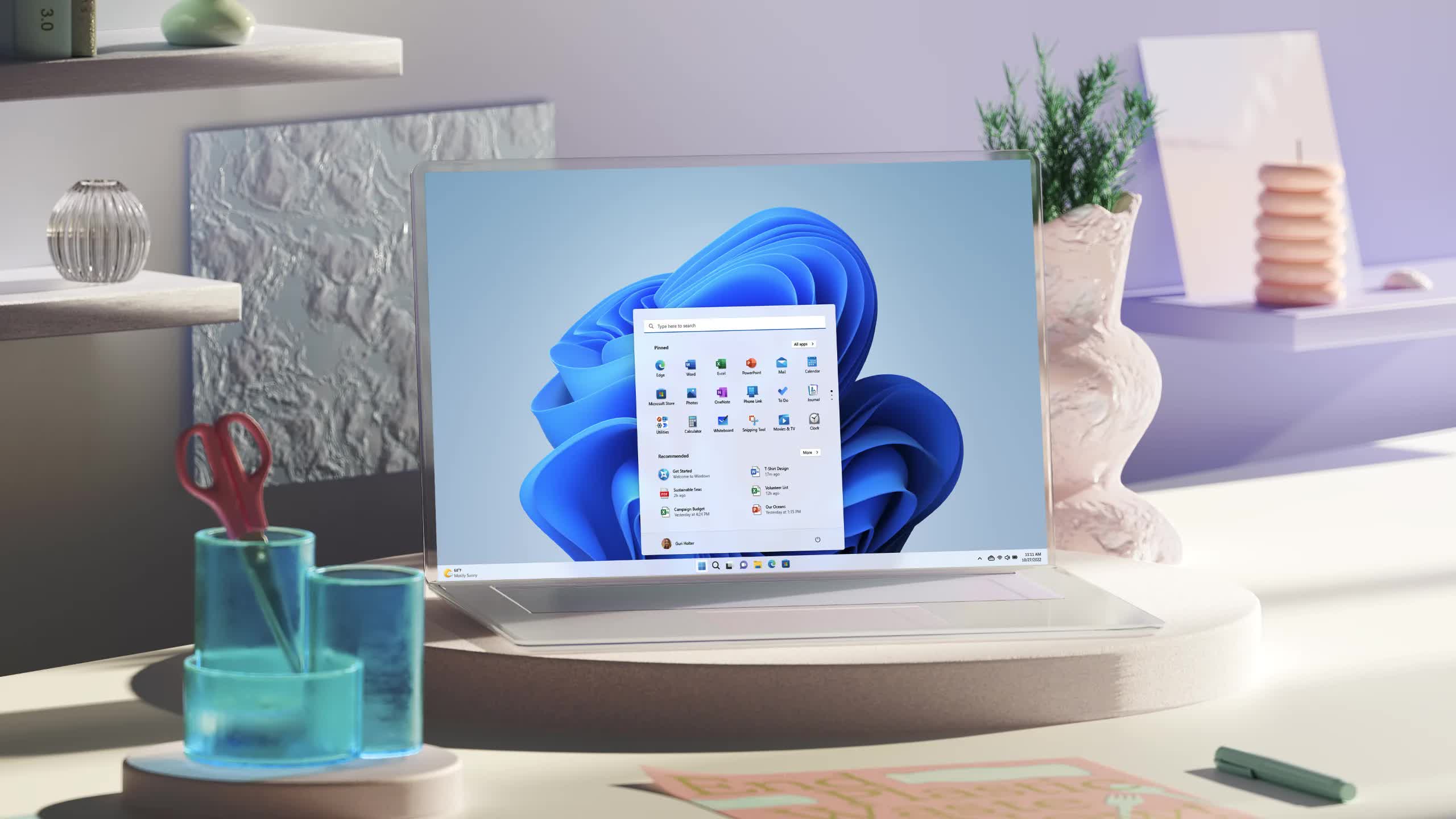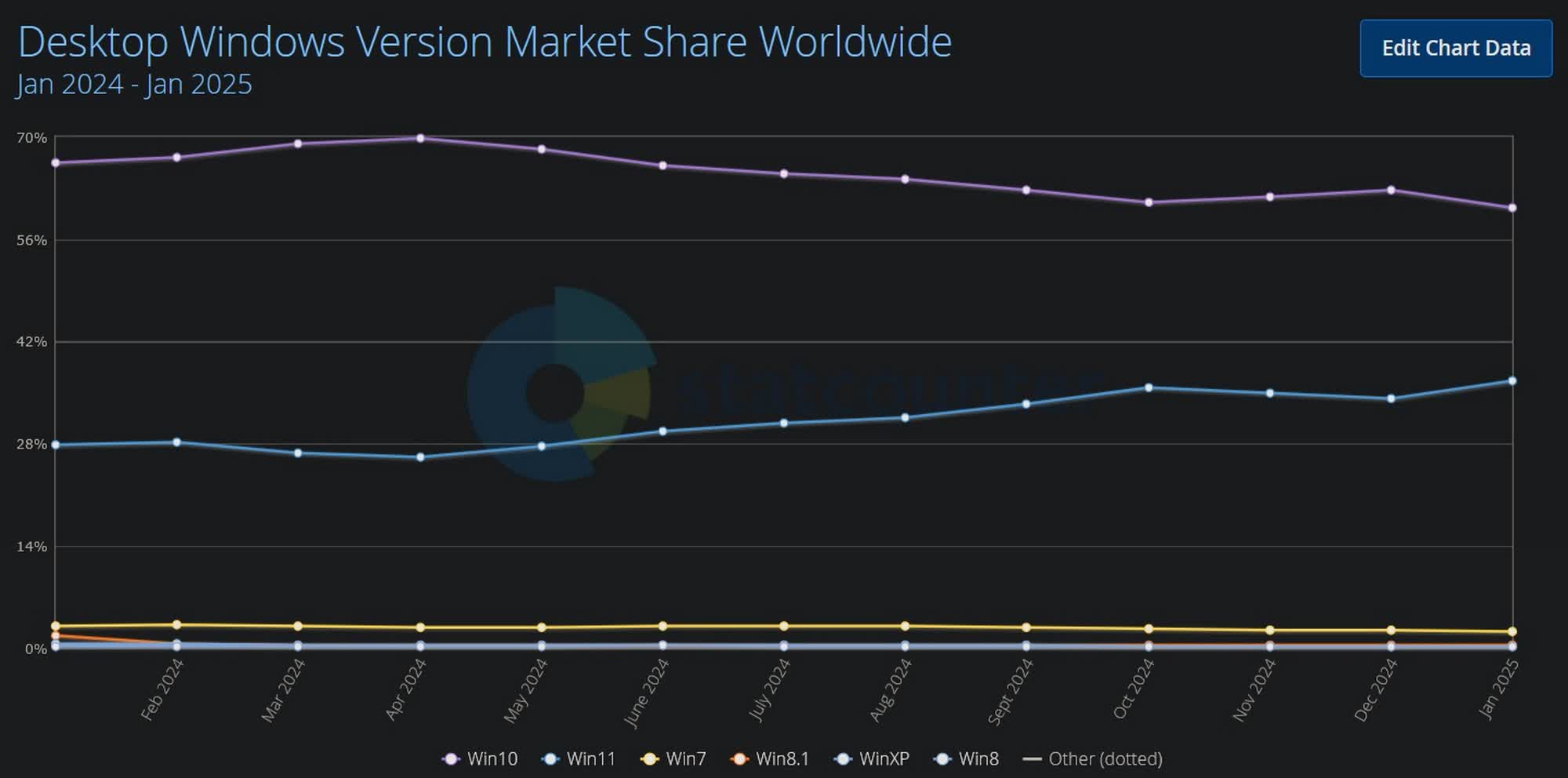In a nutshell: Windows 11 reached 36.6 percent market share among all Windows users in January, up more than 2.5 percentage points over December 2024. It marks the largest market share ever for Windows 11, the result of people switching over from Windows 10, which is now less than 7 months away from reaching its end-of-life.
The data comes from analytics platform StatCounter, indicating Windows 10's market share has steadily declined over the past few months after hitting a high of 69.89 percent in April 2024. Despite the drop, Windows 10 remains the most popular version of the OS, commanding a massive 60.37 percent market share last month.
Windows 7, which reached its official end-of-life in 2020, is still holding on to its number three slot with a 2.24 percent market share, while Windows 8, Windows 8.1, and Windows XP rounded out the top-six with sub-1 percent market share each. Windows Vista, which was widely panned upon its release and never managed to lure people away from XP even during its heyday, is nowhere on the list.
Windows 10 may be nearing its official end-of-life, but it remains a popular operating system. Over the past few months, Microsoft has been sharing warnings and publishing blog posts to notify Windows 10 users of its impending demise, but it has not achieved the effect the company hoped for. While Windows 11 has gained some market share, people haven't left Windows 10 in droves in favor of the newer version.
There are multiple reasons for the less-than-impressive uptake of Windows 11. Many have steadfastly refused to upgrade due to the telemetry and large amount of in-shell ads in Windows 11. Additionally, Microsoft's latest desktop OS also requires a Trusted Platform Module (TPM) 2.0, which many older motherboards do not support, leaving numerous willing users unable to upgrade without coughing up a ton of cash.
Despite Microsoft's urgency to transfer Windows 10 users to Windows 11, it recently began testing a new feature for the older OS. Last month, the company rolled out a new calendar within the Windows 10 taskbar to Insiders in the Release Preview Channel. It's unclear if it will make it to the stable build, but if it does, that could make the calendar flyout on Windows 10 even more user-friendly than its equivalent on Windows 11.

